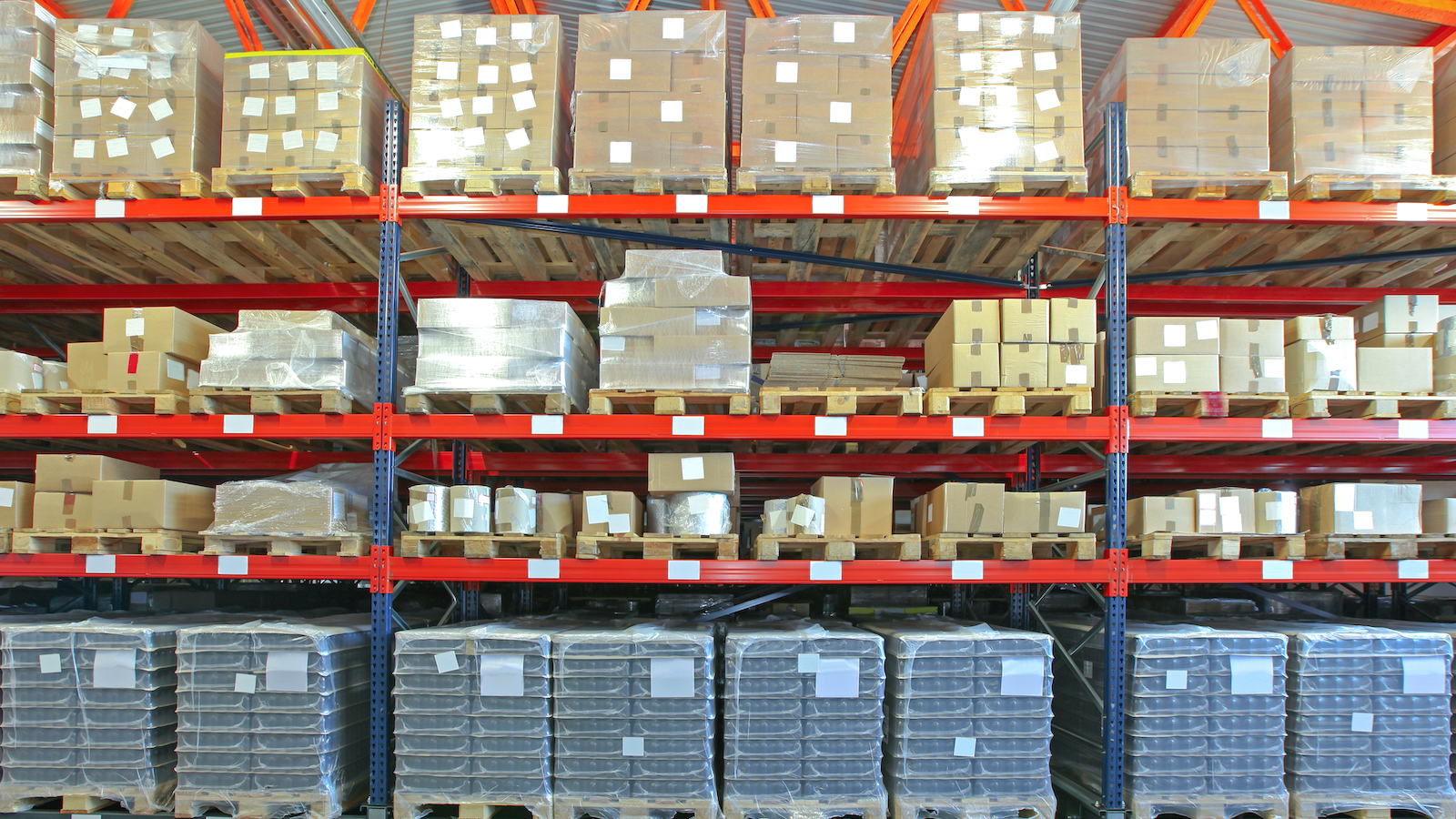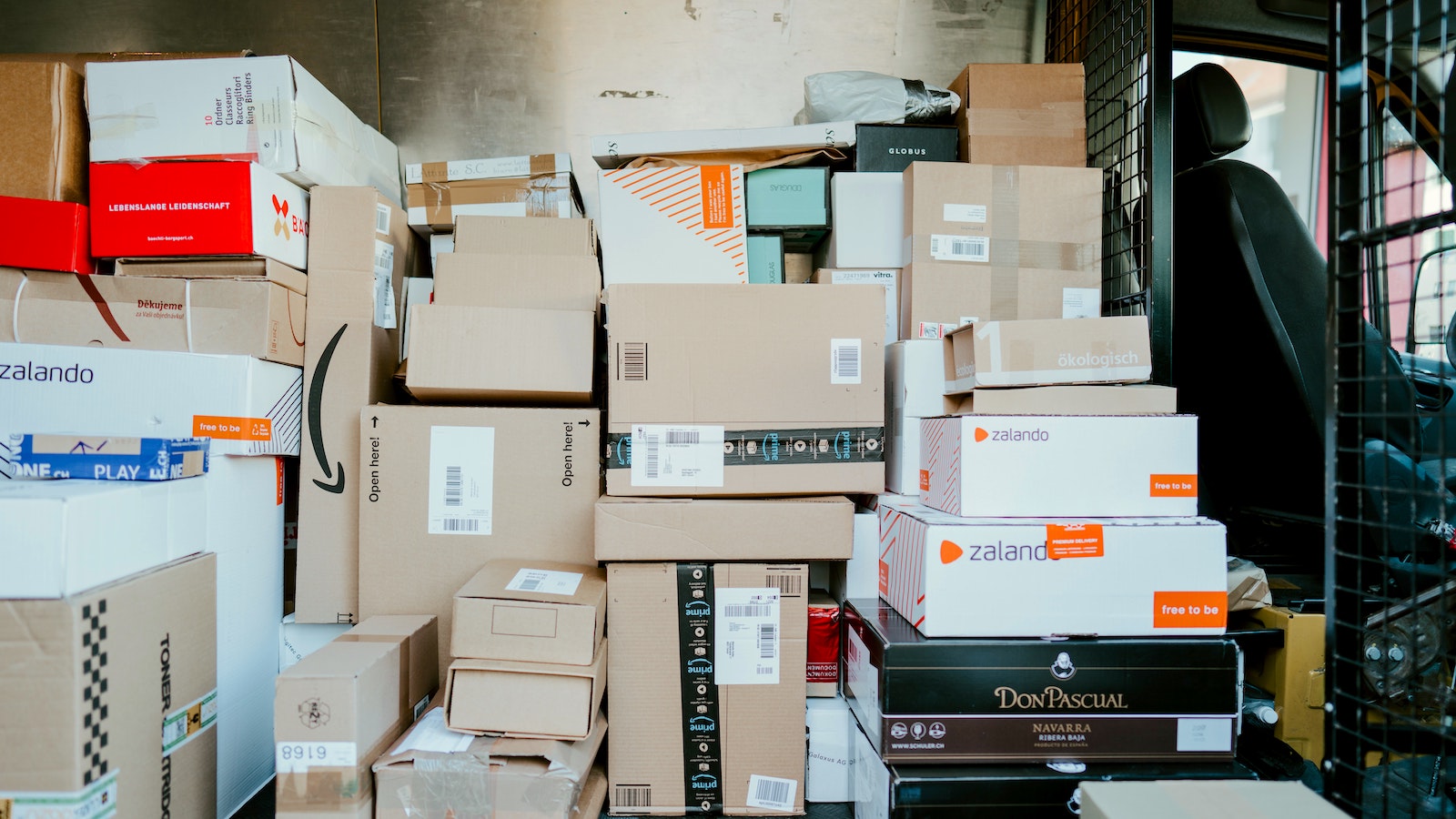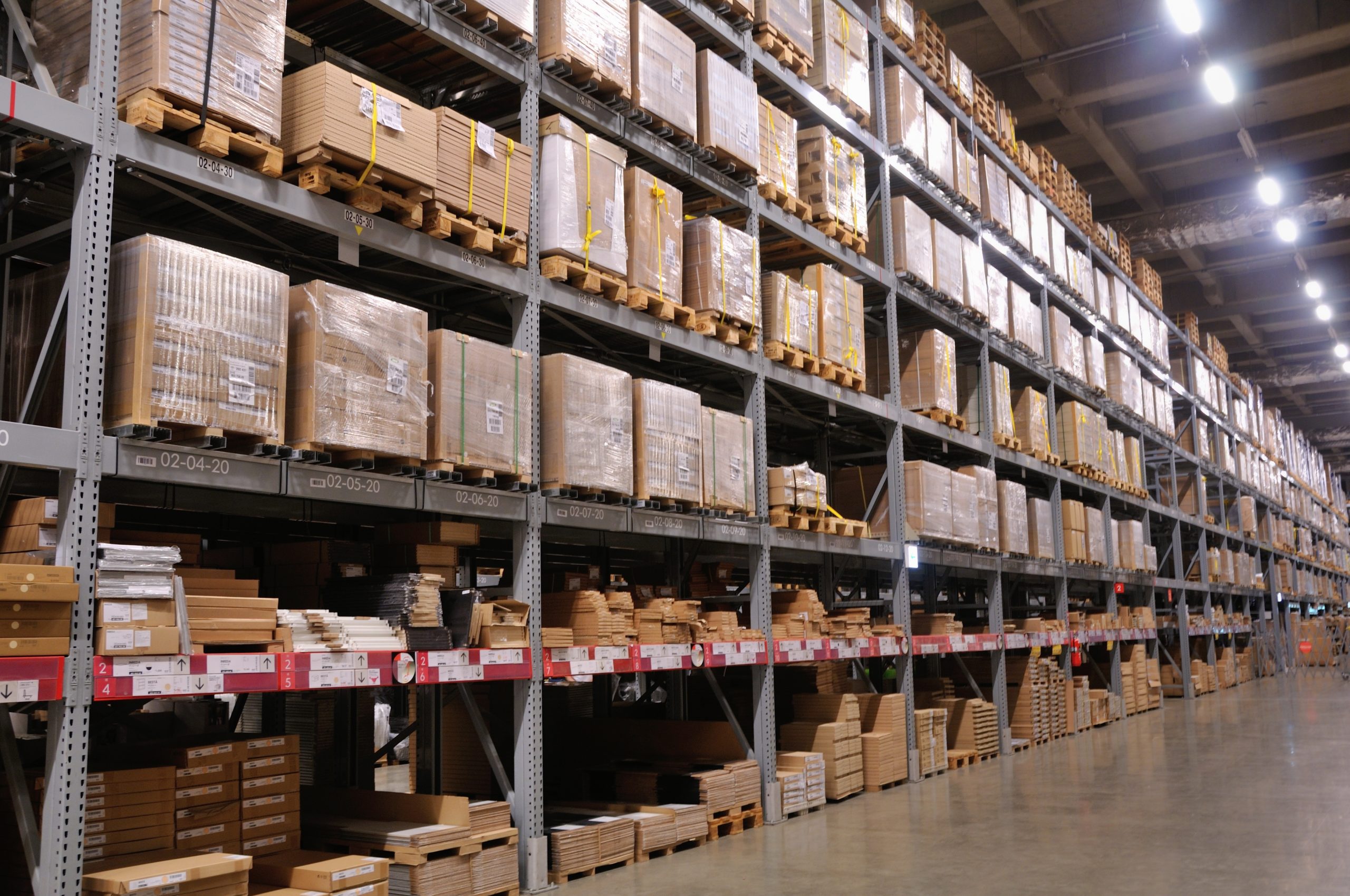Table of Contents
** Minutes
What is centralised inventory?
Why having the right inventory management model in place is so important
Centralised vs. decentralised inventory: which is best?
How ShipBob takes the stress out of your inventory and fulfilment operations
When starting your ecommerce business, you have a lot of decisions to make — but one of the most important is where you’ll store your inventory.
More specifically, you’ll need to decide whether to centralise your inventory, or distribute inventory across multiple locations.
Your inventory management strategy affects almost every other part of your supply chain (including warehouse management, order fulfilment, and overall operational efficiency). For peak performance, you’ll need to choose the distribution system that is best suited for your business.
In this article, we discuss what centralised inventory is, why it’s essential for ecommerce store owners, the main advantages and disadvantages of centralised vs. decentralised inventory, and how ShipBob can help centralise and manage your inventory as you grow.
What is centralised inventory?
Centralised inventory is aninventory storage strategy in which you keep all your stock in one central location. This central hub can be a retail store, a warehouse, or another type of storage facility.
Because all inventory is stored at a central location, instead of different distribution centres, that location also typically houses all or most of thelogistics operations, including order processing and fulfilment.
In a centralised system, all or most functions are managed from a single location, even if you sell from multiple stores or various retail locations.
Why having the right inventory management model in place is so important
If you want to grow your ecommerce business and stay afloat, an effective inventory management system is not a bonus; it’s a need.
The right inventory management strategy unlocks benefits that can transform your operations and position your business to succeed. Here are just a few of the benefits of implementing a good inventory management model in your business.
Better inventory planning
In order to know when to replenish inventory and how much new stock to order, you’ll need accurate inventory counts to go off of.
If your inventory management strategy is up to snuff, you are less likely to miscount inventory, lose SKUs, or waste valuable space keeping obsolete, expired, or excess inventory on the shelf. The right inventory management model helps you track inventory levels, maintain healthy safety stock levels, and meet customer demand.
“ShipBob’s Inventory Planner integration allows us to have all of our warehouse forecasting and inventory numbers in one platform. We can create ShipBob WROs directly in Inventory Planner and have the inventory levels be reflected in our local shipping warehouse and ShipBob immediately.
It also provides forecasting for each individual ShipBob warehouse, so we know how many units we need to ship each week to cover a certain period and also to not run out of stock.”
Marc Fontanetta, Director of Operations at BAKblade
Better customer satisfaction
Customers want to receive precisely what they ordered within an acceptable time frame, and at a reasonable cost. Good inventory management helps prevent stockouts and backorders that disappoint customers, and increases the efficiency of the picking and packing process to facilitate quicker delivery — both of which enable your business to meet and beat customers’ expectations.
Accurate order fulfilment
A well-managed and organised inventory also helps prevent picking and packing mistakes. The right inventory management model ensures that each SKU receives its own dedicated space in your warehouse, to mitigate confusion and improve order accuracy.
Reduced fulfilment & inventory costs
The right inventory management model allows you to reduce inventory carrying costs by minimising obsolete inventory and dead stock. It also helps you to keep your fulfilment costs low by streamlining the order fulfilment process, as it ensures that inventory is stored optimally and picked accurately.
“When I was shipping orders myself, what I paid per order is the same price now to pick, pack, and ship orders through ShipBob. It’s even much cheaper to ship to certain countries, which used to take ages and often got lost with localised post here.
Now, I have very transparent pricing, and I can easily run and plan my business. I also like that I’m billed right away. My old carrier billed monthly, which would drain a huge sum of Euros from my account at once. My cash flow has improved.”
Leonie Lynch, Founder & CEO of Juspy
Centralised vs. decentralised inventory: which is best?
There are two different strategies that a business can use to distribute and store stock: centralised inventory, and decentralised inventory.
As mentioned previously, the centralised inventory management approach involves a business storing all of their stock at a single warehouse or location, and managing logistical functions such as order fulfilment from that hub. This is the most traditional approach to inventory management, as it simplifies your supply chain management by keeping most critical functions under one roof.
Decentralised inventory, on the other hand, involves splitting a business’s inventory between multiple warehouses in different geographical locations, storing a portion of the overall inventory at each location. Each of these locations perform warehousing and fulfilment functions, and process, pick, pack, and ship orders going to a particular region or area close to them. Retailers may use retail locations or storefronts as micro fulfilment centres, and employ direct store delivery instead of one centralised warehouse.
Neither of these two approaches is necessarily always better than the other; rather, both have benefits and drawbacks. Ultimately, you will need to weigh the costs and benefits of centralised inventory against decentralised inventory to decide which approach is best for your business.
To help you evaluate your options, here is a breakdown of the pros and cons of centralised and decentralised inventory.
Pros and cons of a centralised inventory and why you should choose it
In most cases, centralised inventory makes inventory control and management simpler. Since you only need to monitor inventory levels in one location, it’s easier to keep track of how much inventory you have left, and properly manage fulfilment for multiple channels at once. Operating only one warehouse also consolidates expenses and decreases facilities and operations costs.
However, shipping orders from just one location means that orders will take longer to reach most of your customers, and will cost more to ship. This could make it more difficult to scale your operations, especially if you plan to sell internationally.
Storing all inventory in one place also means that, in the event of an unexpected disaster that impacts your central warehouse, you won’t have any backup inventory stored in other locations.
Pros:
- Streamlined inventory control and management
- Lower operational and facilities costs
- Easier multi-channel fulfilment
Cons:
- Slower shipping speeds, higher average shipping cost
- Makes it harder to scale your operations
- No backup inventory in case of unexpected disasters
Best for: Smaller ecommerce businesses that ship to a local customer base, sell through multiple channels, and do not plan to scale quickly in near future.
Pros and cons of a decentralised inventory and why you should choose it
With the need for ecommerce retailers to provide fast and hassle-free deliveries, decentralised inventory is quickly gaining in popularity. Storing inventory in multiple strategically placed fulfilment centres allows a business to fulfil orders closer to the customer, which reduces shipping distance, shortens transit time for most orders, and drastically reduces average shipping cost.
Decentralised inventory also allows businesses to allocate inventory based on changes in demand at certain locations. For example, if a certain product is experiencing high demand in one city, retailers can take the inventory from a low-demand warehouse and reallocate it to the warehouse where it will see greater demand.
Overall, decentralising your supply chain makes it easier to scale your operations — especially even if you want to expand globally — and provides pockets of backup inventory if one warehouse experiences an unexpected disaster.
But there are some drawbacks to decentralised inventory. It is costly for a business to rent, operate, and maintain multiple facilities, which can eat into profit margins. Tracking inventory levels across multiple warehouses is also challenging, and it can be difficult to plan inventory and see the bigger picture of your operations.
Pros:
- Faster and cheaper shipping the delights customers
- Better for scaling your business, especially internationally
- Backup inventory in case of disasters
Cons:
- Extra rent, maintenance, and operational costs
- Lower margins on certain products
- Complications in managing inventory across multiple locations
Best for: Growing ecommerce brands with customers all over the country or in other countries, and/or that want to provide fast and affordable 2-day shipping.
How ShipBob takes the stress out of your inventory and fulfilment operations
ShipBob’s 3PL services and advanced technology combine the simplicity and control of centralised inventory with the reach and scalability of decentralised inventory to give merchants the best of both worlds.
As your logistics partner, ShipBob enables you to manage inventory remotely from a single platform. Using ShipBob’s inventory management software (IMS), merchants can track inventory levels in real time, arrange automatic reorder point notifications to time replenishment, monitor inventory turnover and days sales in inventory, and more.
This system also provides comprehensive inventory analytics to help your business allocate inventory, and tracks your historical sales data so that you can produce better demand forecasts.
ShipBob also allows merchants to scale their operations, without having to sacrifice easy inventory management. ShipBob has dozens of strategically fulfilment centres across the United States, Europe, and Australia that merchants can use to store inventory and minimise shipping distance.
With the help of ShipBob’s analytics, merchants can even calculate the ideal amount of inventory to store at each location based on customer demand to reduce their average shipping costs and facilitate the 2-day shipping customers want.
Whether you use one of our fulfilment centres or multiple, ShipBob takes care of all inventory storage, fulfilment, and shipping for you, while letting you retain the control and real-time visibility you need to run your business.
With ShipBob, merchants can manage their inventory, track shipments, monitor warehouse operations, and evaluate shipping options from one dashboard to create a revenue-driving supply chain that’s efficient, optimised, and successful.
“ShipBob’s analytics tool is really cool. It helps us a lot with planning inventory reorders, seeing when SKUs are going to run out, and we can even set up email notifications so that we’re alerted when a SKU has less than a certain quantity left. There is a lot of value in their technology.”
Oded Harth, CEO & Co-Founder of MDacne
Centralised inventory FAQs
Here are answers to the most common questions about centralised inventory.
Which is better – centralisation or decentralisation?
The best option for your business will depend on your business’s needs, and what it can afford to compromise on. Traditional centralised inventory is better for small businesses and ecommerce stores that are shipping locally, while decentralised inventory is better for growing ecommerce brands looking to scale, expand internationally, or increase throughput.
Can 3PLs manage decentralised inventory?
Yes! 3PLs like ShipBob have networks of warehouses and fulfilment centres where retailers can store inventory, as well as fulfil and ship orders. The right 3PL partner will also have the technological tools to help you manage various inventories from one platform.
What is the advantage of inventory centralisation?
Inventory centralisation enables you to keep all inventory in one place, which simplifies inventory management enormously. It is also cheaper than renting and operating multiple warehouses, and makes multi-channel fulfilment easier.
What is the difference between a centralised and decentralised warehouse?
A centralised warehouse stores all of a business’s inventory, and also usually fulfils and ships all orders as well. A decentralised warehouse, on the other hand, is one of many similar warehouses that stores a portion of a business’s overall inventory, and fulfils and ships only orders that are routed to destinations nearby.



